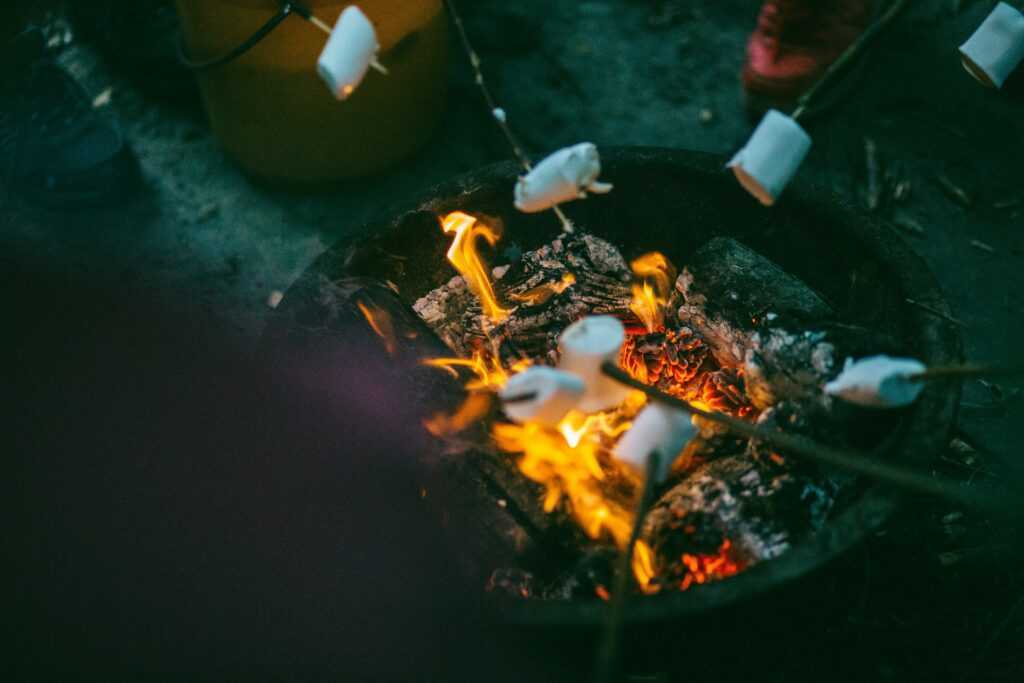Know What You’re Cooking First
Before you even think about packing gear, get real about your menu. Are you keeping it minimalist with one pot meals, or going all out with multi course fireside fare? The kit you bring changes drastically depending on what you’re planning to eat. A pot and a spoon won’t cut it if you’re aiming for burgers, sides, and baked dessert.
Then there’s the fire itself. Open flame is great for grills and skewers direct, hot, and fast. Coals give you more consistent heat for simmering stews or baking cornbread in a Dutch oven. Knowing which heat source works best for your food saves you from half cooked frustration.
Need a jumpstart on the menu? Fuel your prep with ideas from these easy campfire recipes. They’ll help you work backward from the food to the gear and head into the wild with purpose.
Must Have Basics That Actually Work
Before you get fancy with gadgets, lock down the essentials. First up: a heavy duty grill grate. This isn’t the time for flimsy fold and flop versions. You want something that sits solid over a fire and won’t warp when the heat kicks up. A wobbling grate is a one way ticket to spilled food and frustration.
Next, the cast iron skillet. If you’re bringing one thing, this is it. Fry, sear, sauté this pan handles it all. It’s nearly indestructible, holds heat like a champ, and only gets better with age. Not negotiable.
Last on the core list is something too many overlook fireproof gloves. You’ll realize their worth the moment you try to shift a blazing pot without them. Save your hands, keep control, and move gear with confidence. Trust us, they’ve earned their place in the pack.
Smart Add Ons That Make Life Easier
A few smart upgrades can turn a good meal into a great one and save you some backache in the process.
First up: the Dutch oven. If there’s one piece of gear worth lugging into the wild, this is it. Stew, fry, bake it does it all, and it holds heat like a champ. Want chili that simmers low and slow? Biscuits golden on top and flaky inside? This is your multitool. Just mind the weight and make sure your fire setup can handle it.
Next: the collapsible prep table. The ground isn’t your workstation. A solid surface makes food prep faster, cleaner, and way less frustrating. Look for one that folds flat, holds its balance, and has some hooks or compartments for your tools. Bonus if it’s heat resistant.
And don’t forget long reach utensils. Standard kitchen gear won’t cut it when you’re dodging flames. Get tongs and spatulas that give you space to stir, flip, and serve without singing the hair off your knuckles. It’s a small change that’ll make a big difference when dinner’s on the line.
Portability vs. Performance

Cooking gear only works if you’re willing to carry it. That’s why the biggest fork in the trail is this: are you backpacking, or setting up basecamp? If you’re on foot, every ounce counts. Go light, go minimal. Think collapsible stoves, compact cookware, titanium sporks. Now compare that to a fixed site. With a campsite near your car, you can skate on weight and bring the heavier gear that boosts cooking options a full grill grate, proper cast iron, even a camp table.
There’s always a tug of war between size and ability. Tiny pots don’t make chili for four. But oversized setups are dead weight if you’re miles deep. The sweet spot lives in understanding your goals. Modular kits can help a nested set that expands or shrinks based on the trip. One size fits all setups might seem convenient, but they rarely suit every scenario. Learn your cooking habits, know your travel style, and build a kit that makes sense for both. Efficient doesn’t mean under equipped it means purpose built.
Materials That Last (and Clean Up Easy)
Not all campfire cookware is created equal. Cast iron is the heavyweight champ nearly indestructible, holds heat like a furnace, and cooks evenly. The trade off? It’s heavy, takes up space, and you have to season it right. Still, for basecamp setups, nothing beats it.
Stainless steel is lighter, tough, and doesn’t require babysitting like cast iron does. It can take a beating and come out clean, but it’s less forgiving with hotspots if you’re not careful.
Anodized aluminum is featherlight and cleans up fast, making it ideal for backpackers. It handles heat fairly well and won’t react with food. But it’s not as durable under heavy fire, and once it’s dented or scratched, it’s done.
As for gear with non stick coatings? Hard pass. Campfires are messy beasts. Those coatings peel, melt, or flake with direct flames, and suddenly you’re eating Teflon stew.
Whatever material you pick, go for gear that doesn’t turn cleanup into a full shift. Smooth surfaces, minimal grooves, and fewer parts mean you’re not crouched in the dark scraping out burnt bits with a spork. Time at camp is better spent chilling not scrubbing.
Try Before You Pack It
Practice beats theory every time. Don’t assume your gear “just works” because it looks tough or had good reviews. Light a fire in your backyard, local campsite, anywhere safe and put every skillet, grate, pot, and spatula through a dry run. You’ll find out fast which tools handle real heat, and which ones warp, melt, or fall apart when the flames get serious.
Your kit should be reliable and tight. This isn’t about bringing everything you own just to feel covered. Test the essentials. Ditch what’s useless. If you haven’t used it in two test runs, chances are you won’t on the trip, either. Save the weight. Keep the pack lean. A solid field test is better than any packing checklist.
Final Hack: Match Gear to Your Recipes
Don’t show up with a grill pan if all you’re making is pasta. Campfire cooking isn’t about bringing everything it’s about bringing exactly what you need. Think through your meals before you pack a single item. If it’s a chili night, that Dutch oven gets priority. If you’re doing foil pack vegetables and grilled meat, then a grate and tongs are key.
This is where cooking style comes into play. Are you someone who likes to prep and simmer slowly, or do you prefer high heat searing and fast meals? Your setup should reflect that. Build your kit around how you like to cook, not just what looks rugged at the sporting goods store.
To dial it in, start with the food. Flip through recipes that match your vibe, whether it’s campfire nachos or fire baked flatbread. Let your menu guide your gear list so nothing extra weighs you down. Here’s a solid place to start: easy campfire recipes.


 Eugenia Phillips plays a pivotal role in the development of Terra Tactician Tactics, bringing her expertise and enthusiasm for the outdoors to the platform. With a strong background in environmental studies and a passion for adventure, Eugenia is dedicated to crafting content that resonates with both novice and seasoned outdoor enthusiasts. She focuses on creating comprehensive guides and articles that offer practical tips, safety advice, and innovative ideas for those looking to explore nature responsibly and confidently. Her attention to detail and commitment to delivering valuable information have made her an invaluable asset to the project.
Eugenia's contributions extend beyond content creation; she is deeply involved in shaping the platform's mission to foster a community of like-minded adventurers. Her collaborative spirit and love for the outdoors drive her to constantly seek new ways to enhance the site's offerings. Whether she is sharing her experiences from a recent hike or conducting research on the latest survival gear, Eugenia's work is infused with a genuine desire to help others enjoy and appreciate the natural world. Her passion for the project is evident in every article she writes, making her a cornerstone of the Terra Tactician Tactics team.
Eugenia Phillips plays a pivotal role in the development of Terra Tactician Tactics, bringing her expertise and enthusiasm for the outdoors to the platform. With a strong background in environmental studies and a passion for adventure, Eugenia is dedicated to crafting content that resonates with both novice and seasoned outdoor enthusiasts. She focuses on creating comprehensive guides and articles that offer practical tips, safety advice, and innovative ideas for those looking to explore nature responsibly and confidently. Her attention to detail and commitment to delivering valuable information have made her an invaluable asset to the project.
Eugenia's contributions extend beyond content creation; she is deeply involved in shaping the platform's mission to foster a community of like-minded adventurers. Her collaborative spirit and love for the outdoors drive her to constantly seek new ways to enhance the site's offerings. Whether she is sharing her experiences from a recent hike or conducting research on the latest survival gear, Eugenia's work is infused with a genuine desire to help others enjoy and appreciate the natural world. Her passion for the project is evident in every article she writes, making her a cornerstone of the Terra Tactician Tactics team.